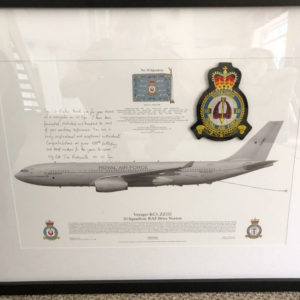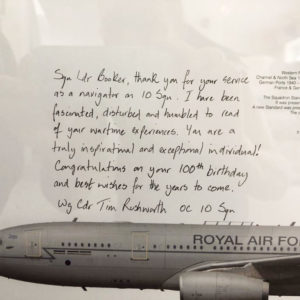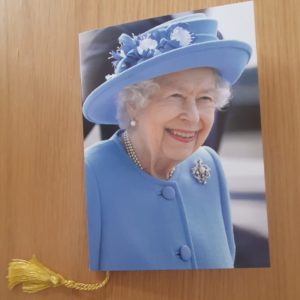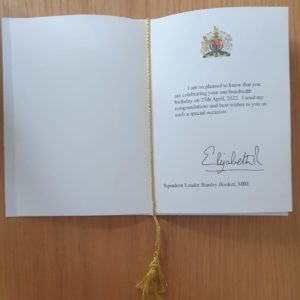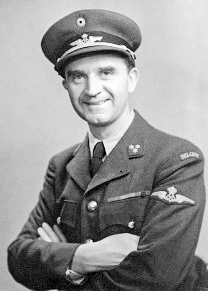Today, I’d like to celebrate Stanley Booker’s 100th birthday with all of you.
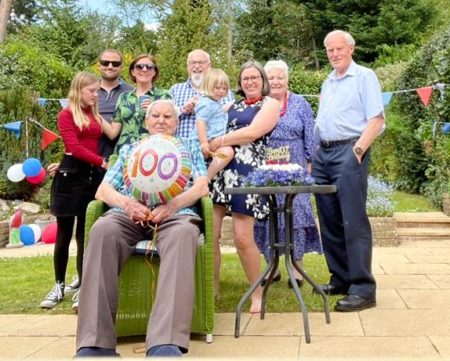
I introduced you to Stan several years ago in my blog, The Last Train Out of Paris (click here to read the blog). He was one of 168 downed Allied airmen captured by the Gestapo and deported to KZ Buchenwald where the men were to be executed as Terrorfliegers, or Terror Flyers. Two days before their scheduled execution, Hermann Göring had the men transferred to a Luftwaffe POW camp. Stan is the last surviving member of this group. However, his life story does not begin nor end with his World War II adventures.
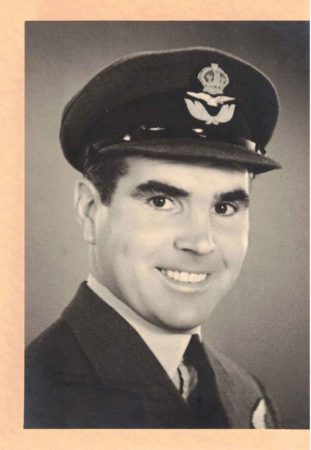
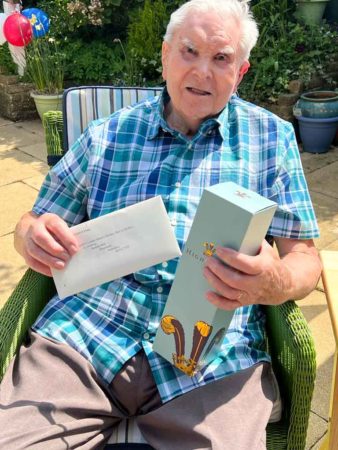
Stan’s Century Birthday Thoughts
As I approach my 100th birthday, I pause and reflect on the events, experiences, and the people who have influenced me during the years that span my long life.
I have experienced the best and worst of mankind; the generosity of a loving wife and family; the comradeship of fellow airmen during combat and imprisonment; the small kindnesses given by fellow prisoners incarcerated with me in the notorious Buchenwald concentration camp.
I remember the bravery of members of the French Resistance who sheltered me after my Halifax bomber was shot down in June 1944 and the skills of my pilot and wireless operator, who were killed as they steadied the burning aircraft, enabling the rest of the crew to parachute to safety.
I was inspired by the leadership of Sqn. Ldr. Phil Lamason RNZAF, who motivated 168 captured Allied airmen to find an inner strength to withstand the horrors and brutality of everyday life in KZ Buchenwald (1944). He was a true hero and role model.
The bravery displayed by the SOE (British-led Special Operations Executive) and Allied special agents, who were murdered at Buchenwald in September and October 1944, has haunted me⏤it was a death sentence that I managed to escape by just two days. The discreet support by Capt. Christopher Burney, SOE, during our incarceration and his key role in our rescue by the Luftwaffe enabled 166 Allied airmen to survive and be moved to Stalag Luft 111.
I have been betrayed by two double agents, the Belgian Jean-Jacques Desoubrie, who worked for the Gestapo in Paris (July 1944) and the Cold War Soviet agent, George Blake, whose treachery compromised our military intelligence work in Berlin (1962).
I have known fear, pain, and abandonment during Gestapo interrogations and solitary confinement in Fresnes prison. This contrasts with my positive experiences during the Berlin Airlift where the Allied Air Forces worked as a coordinated team to supply essential food and humanitarian aid to a starving German population.
The Cold War provided interesting and dangerous challenges and whilst I was working in RAF Gibraltar as the Intelligence Officer, the Cuba Crisis brought us to the brink of World War III.
In 1965, I was honoured to be awarded an M.B.E. by Her Majesty the Queen Elizabeth. Then in 2021, the Chevalier de la Légion d’honneur was bestowed on me by the government of France.
In 1984, I returned with my wife to Buchenwald Concentration Camp to seek evidence which could prove that I had been a prisoner of the SS. The British government had denied that I had been in Fresnes prison and Buchenwald. Thanks to the archivist at the Buchenwald Camp Museum, the original Gestapo records were found, which detailed the arrival of 168 Allied airmen on 20 August 1944 to KZ Buchenwald and further documents proved the factual evidence that I had been seeking since 1945.
We were invited to attend on behalf of my beloved country, the 40th anniversary of the liberation of Buchenwald which was a very special and emotive event.
My life has been full of contrasts and the memories of family, friends, and colleagues have sustained me over the years. I have been privileged to live a comfortable retirement where everyday things are valued; good food; clean sheets; warmth; my independence, and the peace and beauty of my garden.
These days I am supported by an excellent team of Carers and medical staff, who enable me to live in my own home and I am enriched by memories of my late wife, Marjorie, whose love and affection provided comfort for 78 years.
Last year (23 October 2021), the community of Îlliers l’Évêque, France, held a special commemorative event to remember the liberation of France; to reflect on the historic role of the local resistance families who had sheltered many evading Allied airmen, and to honour the crew of my Halifax MZ630 bomber. Two members of the crew are buried at the nearby cemetery of St. Andre d’Eure and are honoured by the French community.
My thanks and appreciation goes to M. Jean-Pierre Curato of Îllier l’Évêque, who coordinated the memorial event and whose enthusiasm for local history brought the local community and representatives from Allied embassies together in friendship and celebration. This commemoration was an honour which has provided me with a profound sense of peace.
My personal belief and actions have echoed the words on the KZ Buchenwald memorial:
“It is the duty of the living, to honour the dead.”
⏤ Stanley Booker Sqn.Ldr (Rtd) RAF
20 April 2022
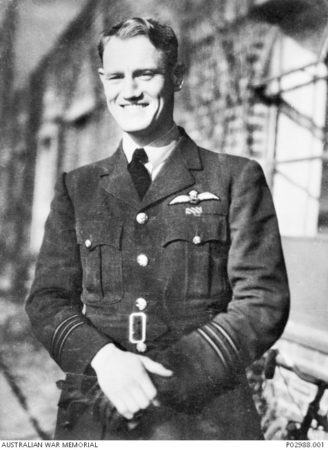

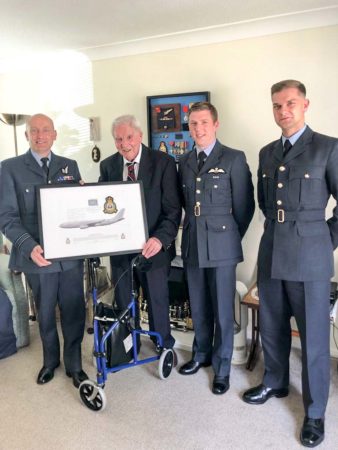
Sqn. Ldr. Stanley Booker, MBE, RAF (Rtd), Chevalier de la Légion d’honneur
On 25 April, 1922, Stanley Booker was born in Gillingham, Kent and at the age of seventeen joined the Royal Air Force (RAF) as an apprentice. He trained as an “observer” in Wales and after his commission, joined RAF 10 Squadron as a navigator flying Halifax bombers. Their mission during World War II was to target the railway lines and marshalling yards used by the Germans in France and Germany to resupply German troops and armaments to the French coast of Normandy. The heaviest bombing came during the 30-days leading up to the D-Day landings on 6 June 1944.
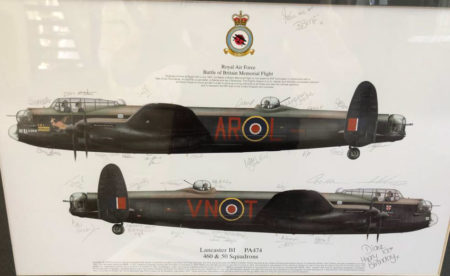
British bombings took place at night. (American bombers flew daylight missions.) On the night of 3 June 1944 at 1:00 AM, Stan’s Halifax was shot down and crashed near Saint-André-de-l’Eure, France; west of Paris and north of a small village, Îlliers-l’Évêque. Stan survived the parachute landing and was taken in by the French Resistance who provided shelter, civilian clothes, and fake identity documentation (his new name was “Pierre Le Comte”). Ultimately, Stan and other crew members were betrayed to the Gestapo by a Belgian traitor, Jean-Jacques Désoubrie (click here to read blog, The Last Train Out of Paris).
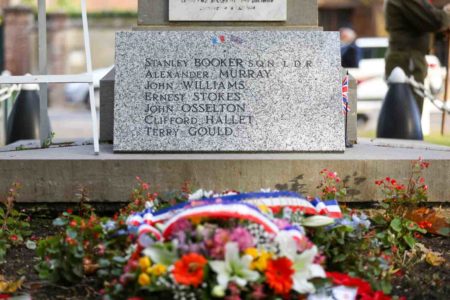
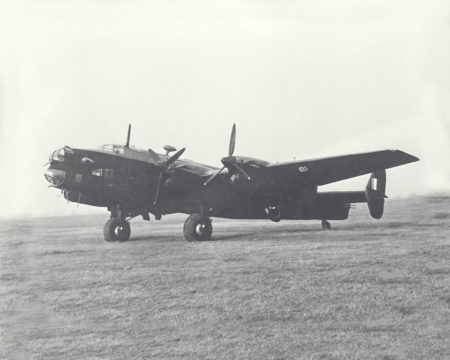
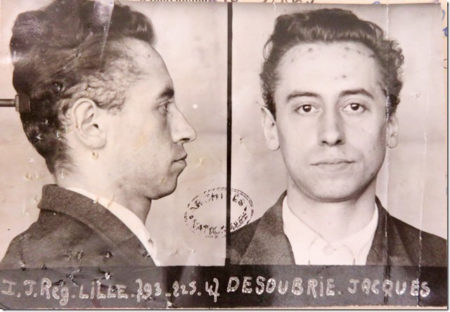
Taken to the infamous Fresnes prison used by the Gespato, Stan was incarcerated with other résistants and foreign agents (primarily SOE agents). Likely because he was caught in civilian clothes, Stan was treated as a spy and denied prisoner of war status or contact with the Red Cross. He was interrogated, tortured, and thrown into solitary confinement. Despite these hardships, Stan never compromised any military information to the enemy.
KZ Buchenwald
Five days before Paris was liberated, Stan and 167 other captured Allied airmen were packed into a cattle car bound for KZ Buchenwald. After stopping to unload the women prisoners at KZ Ravensbrück and five days after leaving Paris, the men arrived at Buchenwald.
Stan and other RAF, Canadian, and American airmen were isolated in a special quarantine area near the camp’s crematorium. The “Little Camp” was an area where prisoners were not expected to survive. The “Process” consisted of stripping down and being completely shaved with all clothes and possessions confiscated. Shoes were not allowed, and they had to sleep on stony ground without blankets or covering. They experienced atrocities and inhumane treatment such as beatings and starvation. The camp doctors injected them with experimental drugs. (Click here to read the blog The Naked Heroine; and here to read Extermination Camp Doctors.) Worst of all, the men were classified as terrorists and condemned to die.
“Escape”
Eventually, through the camp underground, the Luftwaffe was notified of the 168 men and the death sentences. Göring was afraid that if these men were executed, the Allies might treat captured German pilots the same way. With two days to spare, Göring’s orders came through to have the men transferred to Stalag Luft 3 in Poland. Unfortunately, two of the airmen had died in the meantime of exposure and infection.
By the end of January 1945, the Soviet army was advancing toward the POW camp and the Germans forced their prisoners to march west to Germany. Heavy snow and freezing temperatures were the conditions the men faced before arriving at Spremberg, Germany. After being split into three groups, Stan’s exhausted group marched to the dilapidated POW camp (Luft III-A) at Luckenwalde, south of Berlin. On 22 April 1945, the Soviet army “liberated” the camp but took Stan and the men as hostages. They were held as political prisoners for the purpose of negotiating a prisoner exchange with the Allied forces. Three weeks after V-E Day, Stan was turned over to the Americans and eventually flown back to England on 29 May. Click here to watch an interview with Stanley celebrating VE75.
The Missing Year
Upon his arrival, Stan was debriefed by MI9 (click here to read the blog, Possum). MI9 did not believe Stan’s story of his capture, deportation to Buchenwald, and POW status. In other words, the British government will not officially acknowledge the year Stan was in German custody. The Air Ministry has refused since 1945 to acknowledge Stan’s claim that he had been a Buchenwald inmate.
However, in 1946, the UK government authorized Stan to return to France for the purpose of searching for the graves of the pilot and wireless operator of his downed Halifax. He eventually found the graves of Flying Officer “Sandy” Murray and Warrant Officer “Taffy” Williams in a deserted village graveyard. Officially identified by the RAF, the men’s remains were transferred to a cemetery in the nearby town of Saint-André-de-l’Eure and given a proper burial.
Stan’s 77-year journey to gain the recognition of his “missing year” is not just for himself and the other captured British airmen but to seek recognition and justice for the brave and patriotic SOE and Allied agents murdered at Buchenwald.
Post-War
After the war and repatriation, Stan served as a navigator during the Berlin Airlift (24 June 1948−12 May 1949). He was involved in delivering humanitarian aid to the starving citizens of western controlled Berlin. For Stan, this was a “role reversal” that was both a catharsis for him as well as providing an insight into the population he considered to be “the enemy” only three years earlier.
By 1950, Stan was working for British intelligence (MI6) in Germany. Stan’s official chauffer was a former Luftwaffe fighter pilot. During their discussions, Stan learned the pilot was flying in the same area the night Stan’s bomber went down and had scored two “hits” on enemy bombers that night. While working for MI6, the Soviet double agent, George Blake (1922−2020), betrayed hundreds of British undercover agents, including Stan, resulting in several executions.
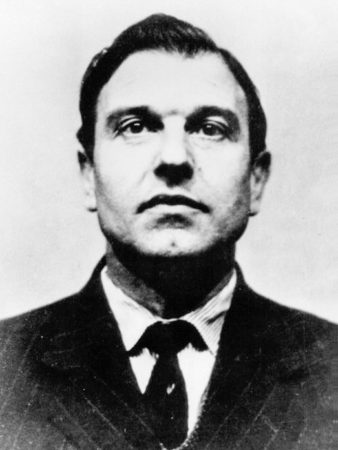
Honors
In 1965, Stan was awarded an M.B.E. by Queen Elizabeth II for his specialist work during the Cold War. On V-E Day 2020, a Spitfire flew over Stan’s home in honor of his World War II experiences. Most recently (21 December 2021), the president of France, M. Macron, appointed Stan as a Chevalier de la Légion d’honneur.

On 8 May 2022, the villagers of Îlliers-l’Évêque laid a poppy wreath at the local war memorial and reflected on the contribution of the Allied troops; airmen, foreign agents, and members of the French Resistance who worked together to liberate their town and France. A plaque with the names of Stanley Booker and the other six members of his Halifax crew is now part of the memorial next to the village chapel.
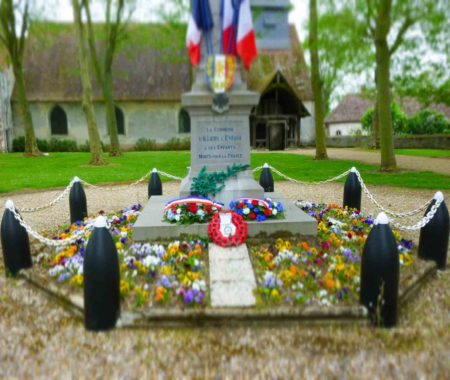
Retirement
Stan has devoted his retirement to searching for the truth and he travelled back to France and Germany many times to locate documentary evidence of his betrayal, capture, and detention in Buchenwald.
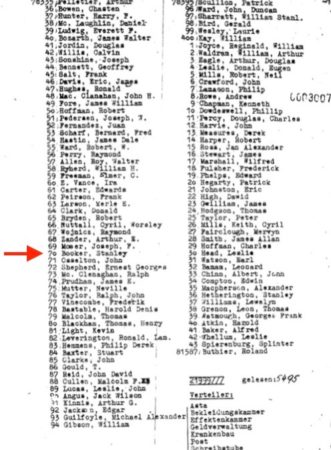
Stan’s one and only goal is to get the British government to acknowledge that he and the other Allied airmen had been imprisoned by the Gestapo, mistreated, and denied their legal rights as prisoners of war. All the surviving airmen suffered symptoms of physical, emotional, and mental trauma until their deaths. Stan wants to see financial compensation and reparations for his fellow prisoners and their families. As part of this quest, Stan is seeking official recognition for the thirty-seven SOE members who were in Buchenwald with him; thirty-one of them were murdered.
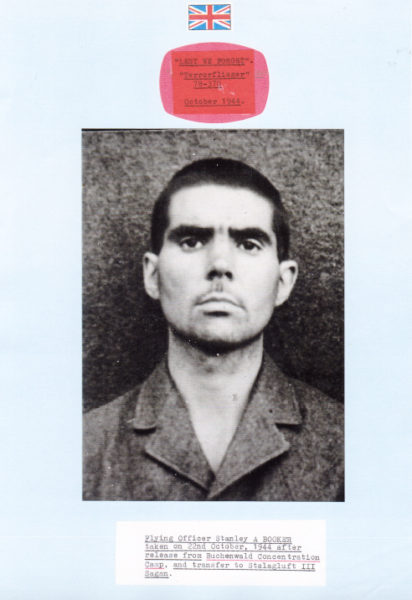
STANLEY, WITH THE GREATEST OF GRATITUDE FOR YOUR SERVICE, WE ALL WISH YOU A VERY HAPPY CENTURY BIRTHDAY AND MORE TO COME!


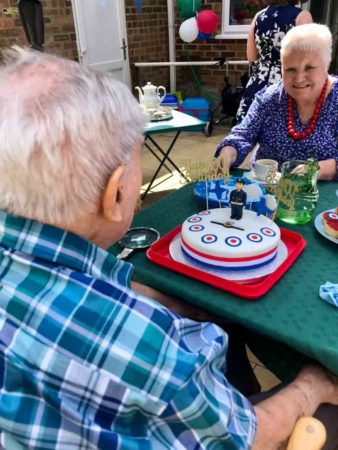
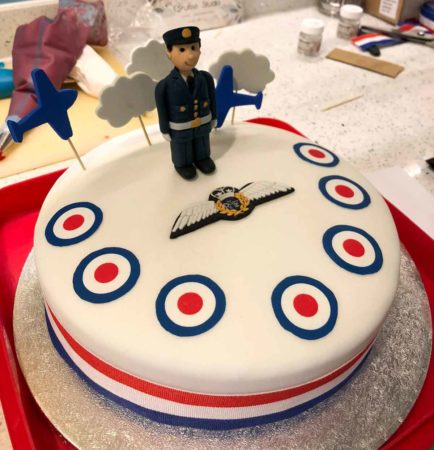
★ Learn More About Stanley Booker ★
Burgess, Colin. Destination: Buchenwald. Australia: Kangaroo Press, 1996.
Childers, Thomas. In the Shadows of War: An American Pilot’s Odyssey Through Occupied France and the Camps of Nazi Germany. New York City: Henry Holt and Company, 2002.
Cobb, Matthew. Eleven Days in August. London: Simon & Schuster, 2013.
Collins, Larry and Dominique Lapierre. Is Paris Burning? New York: Warner Books Edition, 1965.
Dorsey, Michael (Producer, Director, and Narrator). Lost Airmen of Buchenwald. Mike Dorsey, 2021.
Kaiser, Charles. The Cost of Courage. New York: Other Press, 2015.
Kinnis, Arthur G. and Stanley A. Booker. 168 Jump Into Hell: A True Story of Betrayed Allied Airmen. Canada: Self-published, 1999.
Maillet, Jean-Luc. Aviateurs déportés à Buchenwald: Aviators in Buchenwald. Click here to read in English.
Moser, Joseph. A Fighter Pilot in Buchenwald: The Joe Moser Story. Chicago: All Clear Publishing, 2009.
Colin Burgess wrote his book before many classified documents had been released. He is in the process of revising and updating the book for a second edition. Upon release, we will link the above reference to a site where you can purchase it.
Disclaimer:
There may be a chance that after we publish this particular blog, the video links associated with the blog are no longer accessible. We have no control over this. Many times, whoever posts the video has done so without the consent of the video’s owner. In some cases, it is likely that the content is deemed unsuitable by YouTube. We apologize if you have tried to access the link and you don’t get the expected results. Same goes for internet links.
What’s New With Sandy and Stew?
As you read this, Sandy and I are sitting on a plane headed to Europe. We hope to finish the remaining research needed for our next book, Volume Two of Where Did They Put the Gestapo Headquarters? We look forward to seeing Raphaëlle again and spending several days with her. After we return, I will outline some of the sites we visited as well as our visits with some friends.
We are looking forward to seeing Stan and his daughter, Pat Vinycomb, during our stay in London. They have been very gracious to invite us over for brunch.
Thank you to all of you who subscribe to our bi-weekly blogs. It seems there isn’t a day that goes by where we don’t increase our readership. Please let your history buff friends and family members know about our blog site and blogs.
Someone Is Commenting On Our Blogs
I’d like to thank Stan’s daughter, Pat Vinycomb, for assisting us with this blog. Pat is in the process of writing a biographical book about her father. Stan provided a testimonial to our recent book, Where Did They Put the Gestapo Headquarters? I’m sure Stan doesn’t need my book to answer that question. But I would like to thank him (which I will do in person) for writing the testimonial.
If there is a topic you’d like to see a blog written about, please don’t hesitate to contact me. I love hearing from you so keep those comments coming.
Share This:
Follow Stew:
Find Stew’s books on Amazon and Apple Books.
Please contact Stew directly for purchase of books, Kindle available on Amazon. Stew.ross@Yooperpublications.com or Contact Stew on the Home Page.
Please note that we do not and will not take compensation from individuals or companies mentioned or promoted in the blogs.
 Walks Through History
Walks Through History
Copyright © 2022 Stew Ross

